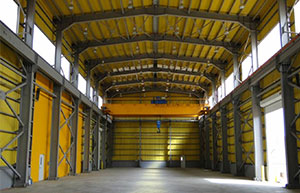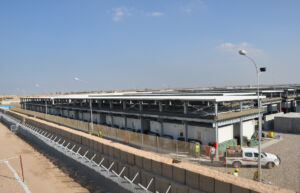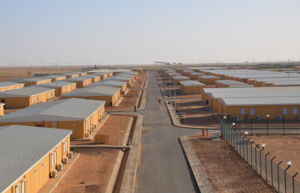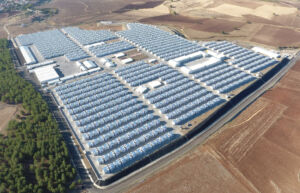Prefabricated vs. Traditional Construction: A Cost, Time, and ROI Analysis
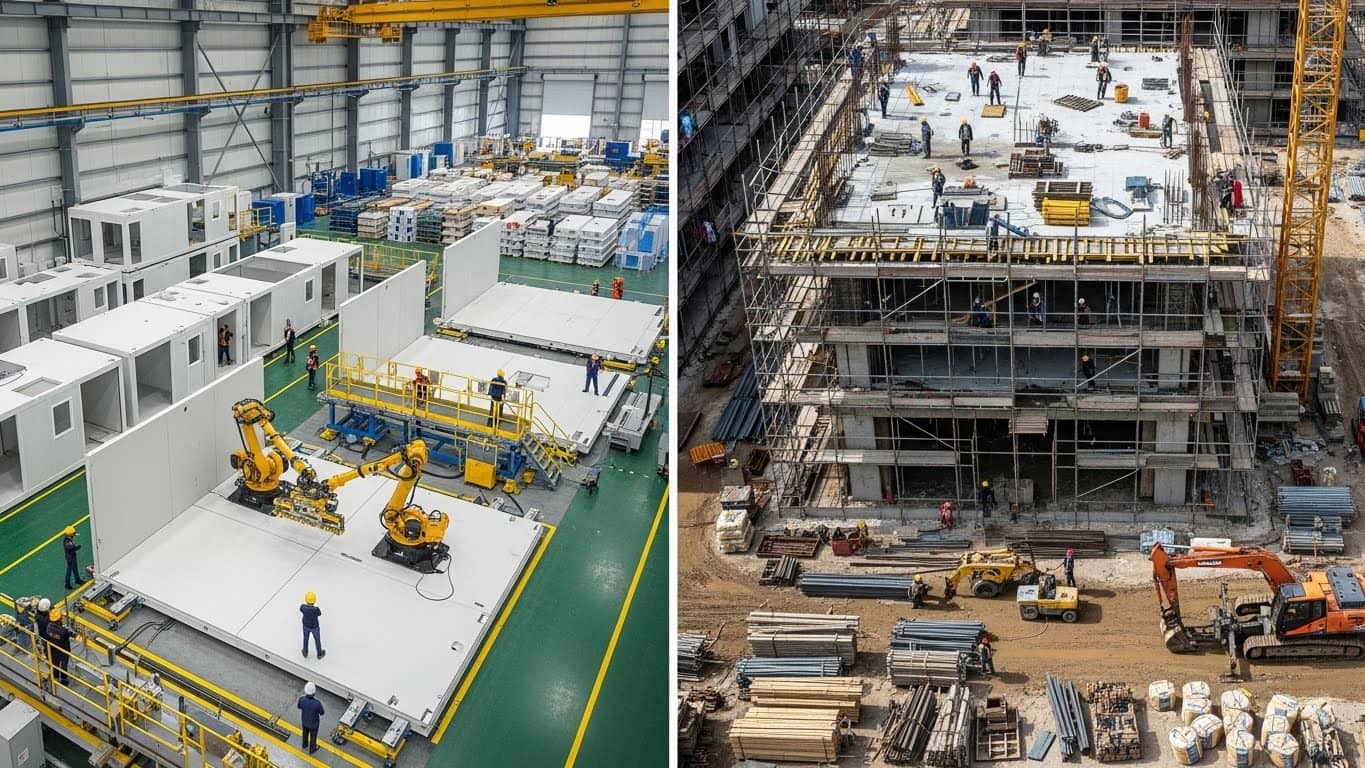
The debate between prefabricated construction and traditional construction has rapidly intensified as global markets demand faster delivery, improved cost certainty, enhanced safety performance and lower carbon footprints. Modern prefabrication, supported by industrialized manufacturing and digital design, is no longer a niche alternative. It is a strategic delivery method used across housing, healthcare, energy, industrial facilities and large scale workforce camps. To evaluate these systems objectively, we need a structured analysis of cost dynamics, time performance, operational efficiency and long term return on investment (ROI). This article provides a comprehensive, sector specific comparison based on global research, industry benchmarks and proven project outcomes.
What Defines Prefabricated and Traditional Construction?
Prefabricated construction refers to building components manufactured in a controlled factory environment and transported for assembly on site. These components may be volumetric modules, panelized systems, bathroom pods, building services modules, light steel frames or hybrid assemblies. The goal is to shift labour intensive work away from unpredictable site conditions into optimized manufacturing lines supported by DfMA (Design for Manufacture and Assembly), BIM and quality management systems.
Traditional construction refers to site based building methods where the majority of structural, architectural and building services work is carried out in sequential phases on the project site. This model depends heavily on weather, skilled labour availability, logistical constraints and local subcontractor performance. While traditional construction enables flexibility and customization, it is more exposed to delays, cost overruns, rework and environmental variables.
Cost Comparison
Cost analysis in construction must consider three elements: direct capital cost, indirect project costs and lifecycle cost.
1. Direct Capital Cost
Prefabricated construction can be comparable to or slightly higher than traditional construction in unit cost per square meter depending on complexity, volume and supply chain maturity. Volumetric modular systems may carry premium manufacturing costs, whereas panelized and hybrid solutions often align closely with traditional pricing. Traditional construction benefits from local labour and materials availability but is increasingly affected by labour shortages, inflation volatility and subcontractor fragmentation.
2. Indirect Project Costs
This is where prefabrication demonstrates clear financial advantages. Shorter construction periods reduce preliminary costs, site overheads, financing charges and project management expenses. For developers in commercial or residential sectors, earlier handover directly increases revenue generation and accelerates project ROI. Traditional projects often accumulate higher indirect costs due to longer schedules, weather delays, inspection bottlenecks, multi-trade coordination challenges and higher rework rates.
3. Lifecycle and Operational Cost
Prefabricated buildings typically achieve higher consistency in airtightness, thermal performance and quality of installation. This leads to lower heating, cooling and maintenance costs over the asset’s lifespan. Factory assembled MEP systems reduce the risk of installation defects, improving system reliability and reducing downtime. Traditional buildings show greater variability in performance due to onsite workmanship differences, leading to higher lifecycle costs in some sectors.
Time and Schedule Performance
Prefabricated construction offers dramatic time reductions compared to traditional methods. Factory production and onsite works can proceed simultaneously. For example, while the foundation is being constructed onsite, superstructure modules are being built in parallel in the factory.
Prefabricated Construction Time Advantages
• Overall programme durations can be reduced by 30 to 50 percent in volumetric systems
• Onsite assembly can be 60 to 80 percent faster than traditional structural works
• Weather risk is minimized because most work occurs indoors
• Reduced labour dependency due to factory automation and standardized workflows
• Faster procurement of standardized components rather than bespoke site solutions
Traditional Construction Time Characteristics
• Activities are sequential rather than parallel
• Delays compound over time due to trade interdependence
• Weather disruption significantly impacts progress
• Skilled labour constraints can slow critical path tasks
• Material deliveries require continuous coordination and site handling
For sectors such as healthcare, energy, industrial plants and emergency accommodation, the ability to deliver buildings at speed has measurable strategic value.
Quality, Safety and Technical Performance
Prefabricated construction consistently outperforms traditional construction in controlled quality, safety and technical accuracy.
Quality
Factory environments provide:
• Precision cutting, welding and assembly using automated systems
• Consistent insulation installation and airtightness
• Repeatable fire stopping and acoustic detailing
• Strict process controls and digital traceability
Traditional construction quality is influenced by changing site conditions, multi-trade coordination and fluctuating labour skill levels. This leads to greater variability in outcome.
Safety
Prefabrication reduces onsite working at height, manual handling and exposure to hazardous conditions. Factories offer controlled environments with repetitive tasks and engineered safety systems. Traditional sites experience higher accident risk due to weather, equipment interaction and multi-trade congestion.
Technical Performance
Technical rooms, data centers, BESS units and MEP plant modules benefit significantly from prefabrication because equipment is factory tested before delivery. Traditional onsite assembly often results in longer commissioning periods and higher defect rates.
ROI Analysis
A complete ROI evaluation must consider both financial and operational outcomes.
1. Faster Revenue Generation
Shorter programmes in prefabricated construction mean earlier occupancy. For a hotel, student residence, worker accommodation camp or rental property, even a few months of earlier operation translates directly into measurable financial return.
2. Reduced Financing Costs
Because prefabricated projects reach completion faster, construction loans and interest expenses are reduced. Lenders increasingly recognize the schedule reliability of modular projects, lowering perceived risk.
3. Higher Asset Stability and Predictability
Prefabrication minimizes defects and rework, reducing post-handover maintenance expenditure and improving tenant satisfaction. Industrial sectors benefit from reduced downtime, especially for MEP critical buildings.
4. Repeatability and Portfolio Level ROI
Developers and operators using standardized modular platforms across multiple sites achieve compounding ROI gains. Unit costs decrease as volume increases, procurement becomes more efficient and design cycles shorten.
5. Environmental ROI
Reduced waste, lower carbon footprint, higher energy efficiency and fewer site deliveries provide environmental value and regulatory compliance benefits. This increasingly contributes to market competitiveness and ESG reporting.
Sector-Specific Analysis
Housing and Real Estate
Modular housing delivers faster ROI because earlier occupancy generates earlier rental or sales revenue. Prefabricated buildings offer lower post-completion defect rates, reducing warranty claims.
Healthcare
Hospitals, clinics and diagnostic centers benefit from rapid deployment and predictable clinical layouts. Prefabricated components improve infection control due to precise factory detailing.
Energy and Industrial
Prefabricated technical rooms, inverter stations, BESS enclosures and data center modules reduce commissioning time and increase operational uptime.
Remote Workforce Camps and Defense
Prefabricated accommodations, kitchens and sanitation modules enable rapid mobilisation in remote geographies. Reusability and redeployment extend asset longevity and ROI.
Public Sector and Education
Standardised school buildings and public facilities benefit from repeatability, lower disruption to communities and predictable long-term maintenance costs.
Conclusion
Prefabricated construction is not simply a faster way to build; it is a more strategic, digitally enabled and industrialized construction model. Traditional construction still plays an essential role for custom architectural projects, complex geometries and specific structural requirements. However, for sectors where speed, cost predictability, standardization, quality consistency and lifecycle performance matter, prefabricated solutions deliver superior ROI.
The most successful organizations combine both approaches. They use prefabrication strategically for repeatable building types and critical infrastructure while reserving traditional methods for areas requiring architectural or structural flexibility. The future of construction is hybrid, but the competitive advantage increasingly leans toward industrialized, off-site solutions.
